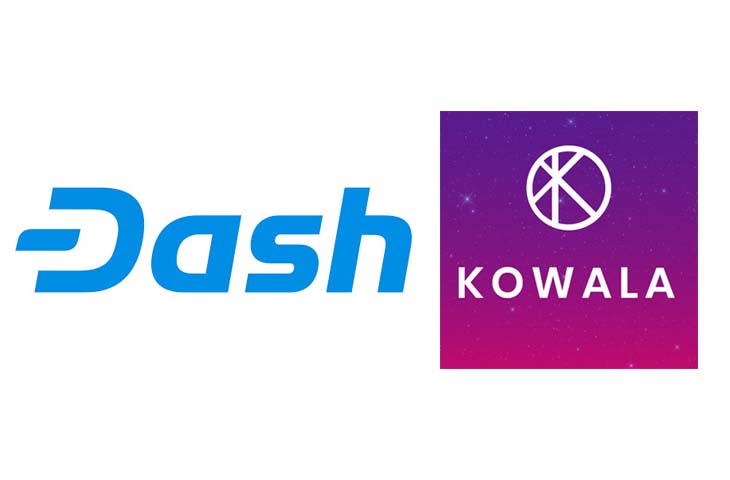Why are major players in traditional sectors turning to blockchain?
Eiland Glover: “Representing both a threat and an opportunity for traditional industries, cryptocurrency and blockchain have the power to both dramatically increase efficiency in current business processes and render entire industries — and maybe some governments — obsolete. Large corporations must therefore get into the blockchain game not just to try and stay ahead of the curve, but to ensure their survival.”
Ryan Taylor: “Publicly, we’ve seen many financial institutions delve into the blockchain space. However, many businesses outside of the finance industry are seeking ways to adopt blockchain into their business model whether that be supply chain or record retention. I believe that these groups are turning to blockchain because it’s cost effective, streamlined, and they would like to eventually eliminate unnecessary third-parties.”
What benefits does your project bring to payment networks? To remittances?
Eiland Glover: “Stable cryptocurrencies like the kUSD stablecoin we’re developing at Kowala operate on fast, cheap blockchains that will soon make all payments — remittances included — instantaneous, secure, and practically free. The harder part for the next year or two will be the “last mile” problem — getting your crypto back into fiat currency when you need to. That’s the point at which you must connect back into legacy money systems, and these will likely remain stubbornly resistant to crypto for a little while longer until they finally fade into history. Smart credit card networks and other entrenched payment companies will serve themselves well by investing early and copiously in new blockchain technologies.”
Ryan Taylor: “Cryptocurrencies can dramatically lower the costs and increase the speed of payments and remittances. Unlike many other cryptocurrencies, Dash is purpose-designed for payments and remittances. For example, our InstantSend technology enables payments to transmit anywhere and anytime for micro fees. Currently there are hundreds of physical stores and over 500 websites that accept Dash, and hundreds of thousands of other merchants that accept it through Dash-enabled debit cards. The key for merchants accepting Dash as a payment method in comparison to bitcoin for example, is that our transactions lock within a couple of seconds, making Dash purchases feasible at the register and improving the user experience. It’s also enticing for vendors and suppliers in other industries because Dash integration can completely eliminate cash-handling costs.”
What do you think is holding back the mainstream adoption of the space?
Eiland Glover: “The volatility of cryptocurrencies like Bitcoin and Ether make them unusable as an everyday means of payment for consumers and businesses. Stable cryptocurrencies like the kUSD stablecoin we’re developing at Kowala will soon solve this problem, however, opening up cryptocurrency use for the 99% of the economy cryptocurrency doesn’t yet reach.
So we have no consumers to speak of using crypto, and the regulatory issues are still murky in most jurisdictions — it should therefore come as no surprise that merchants haven’t begun to adopt cryptocurrency en masse? As more and more consumers obtain and use cryptocurrencies, the merchants will surely follow.”
Ryan Taylor: “There’s a couple of major challenges to mainstream adoption of blockchain technology and cryptocurrencies. Chief among them is the current user experience, which constitutes a significant barrier to entry for average users. As an industry we’ve streamlined the experience of acquiring and using cryptocurrencies since 2009, but it is still a fairly daunting task for most individuals who aren’t already in the know, especially when compared to “one-click” functionality of several payments platforms currently.
The other key issue is that scalability needs to be addressed at an industry-wide scale. But for all the focus on scalability as a key priority, there’s been almost no academic research performed on the topic. That’s not to say that industry players, ourselves included, aren’t trying to solve the challenge; but I think there is some underestimation, broadly speaking, of how much research is needed to overcome the scalability challenges facing blockchain technology.”
What can we do to curtail concerns about mainstream adoption?
Eiland Glover: “Both the user experience and scalability problems are relatively simple to overcome. The industry’s maturation over the last year has been rapid, and we’re already seeing the rise of accessible wallets and exchanges with more fiat pairings and simpler user interfaces. With regards to scalability, we’re already witnessing a technological and ideological shift towards innovative Proof-of-Stake consensus mechanisms that promise the transaction speeds necessary for adoption.
The real challenge is making the leap from a small group of speculation-loving crypto enthusiasts to regular crypto virgins who don’t care at all about blockchain, but rather adopt crypto because it’s a better product that contributes to their lives. Stablecoins like kUSD can open up participation to the general population, but we’ll still need a way to prime the pump and trigger mass adoption. At our company, we’re working on tools that make using crypto safe and easy, but we’re also cognizant of the need to make adoption compelling and even fun. The industry hasn’t crossed the chasm yet.”
Ryan Taylor: “Payments behavior is very slow to change… almost generationally slow when you look at the adoption of other innovations like credit cards or checks. When you speak with consumers in the younger age groups, they are much more open to digital currencies. However, there is usually a tipping point that is eventually reached that accelerates the process and draws in older generations. It will take time, but the potential of digital currencies will likely lead to a rapid rate of adoption in comparison to other payment technologies of the past.”
Visa cardholders across Europe were unable to use their cards during a recent outage. Is blockchain a solution that would prevent such a failure in the future?
Eiland Glover: “At face value, a successful implementation of blockchain technology means that companies should be able to avoid central points of failure, and keep their networks running at all times. Obviously, the comparative efficiency of closed versus open blockchain networks, especially on a case-by-case basis, remain to be seen.”
Ryan Taylor: “The Visa outage was a key example of how the world’s payment networks are incredibly centralized, with a relatively small number of entities controlling most of the money flow. The centralized nature of payment networks opens them up to security concerns, as bad actors can easily shut down the whole system by hacking into a single access point. Blockchain, however, offers a decentralized structure that is run by a vast network of participants. With such a structure, there are no single points of failure in the network. In addition, the computer code running the network is open source, which helps ensure the security of the network by making it less likely vulnerabilities remain unidentified.
When do you expect legacy financial companies to “run their whole company on blockchain”?
Eiland Glover: “Smart contracts will definitely offer legacy financial companies the ability to run more of their functionalities using blockchain, but as long as computation fees are priced and paid with volatiles cryptocurrencies, this option will remain unattractive. Companies need an element of predictability when it comes to their costs, and the rise of so called “stablecoins” with smart contract functionality and DApp programmability are already set to offer a solution. I imagine adoption isn’t too far off.”
Ryan Taylor: “While blockchain technology is powerful, it is not ideal for literally all use cases. In addition, replacing legacy systems that function perfectly well today may not offer positive returns. For those reasons, I’m personally sceptical that entire companies – especially existing legacy entities – will make a full transition to blockchain anytime soon.”
Do you think such adoption is inevitable or will the crypto space have to push for it?
Eiland Glover: “While full adoption across all industry verticals is a ways away and certainly something that the space will have to push for, it is clearly on the horizon. This technology is simply too great to pass up, and companies that don’t adopt will fall behind in a way that will ultimately prove fatal.”
Ryan Taylor: “For those use cases that make sense, it is going to take a long time and a lot of effort from the industry to make it happen. Being realistic, it may even take unfortunate events like hacks that could have been prevented by blockchain to spur a proactive adoption. As an example, it took events like the Target and Home Depot credit card hacks to finally spur the adoption of chip cards in the U.S., and that is literally a 20 year old technology.”









